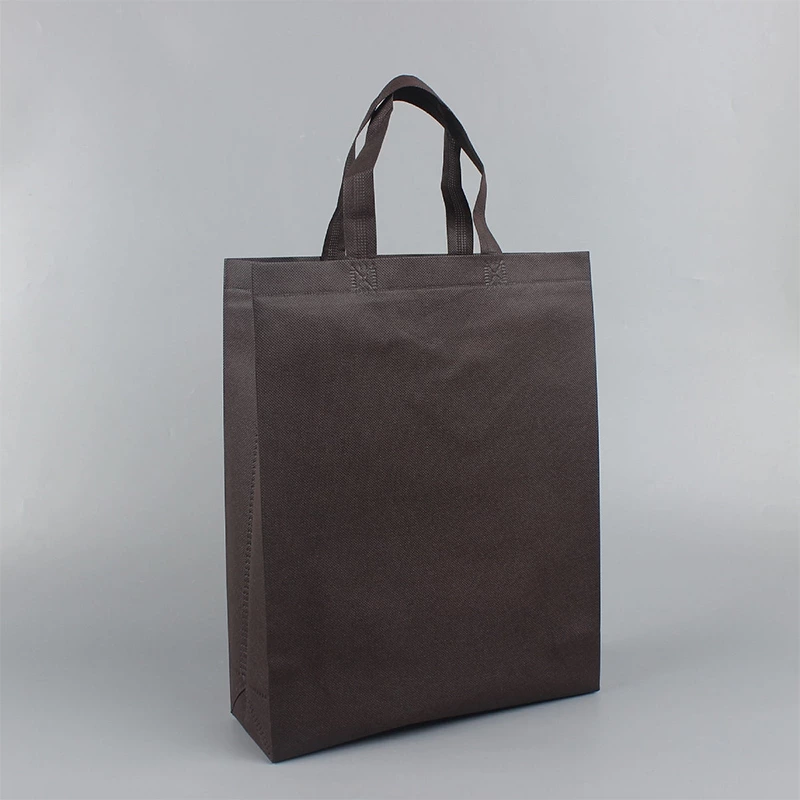Non-woven Fabric Printing Technology
In the continuous technological development, the development of non-woven fabric technology has also reached a new level, and more textile technologies are constantly emerging. Pattern printing in Non-woven Shopping Bag technology is one of the highlights. Constantly add more brilliance to the products you use!
Non-woven fabric discharge printing: wash out colors (discharge printing) discharge print (discharge printing) Use dyes that are not resistant to discharge agents to dye the ground color. After drying, use color dyes containing discharge agents or both containing discharge-resistant agents to print. During post-processing, the ground color dyes at the printing site are destroyed and decolorized, forming white patterns on the color ground or colored patterns formed by dyeing with color dyes. Also known as white discharge or color discharge.
Non-woven fabric reduction printing: This process uses the difference in chemical corrosion resistance of different fibers in interwoven or blended fabrics. Through the printing method, a burn-out agent is applied to remove one of the fibers in the fabric locally, retaining other fibers to form a translucent pattern. Also called burn-out printing or burnt flower printing.
Non-woven shrinkage printing: Chemicals that can expand or shrink fibers are applied locally on the fabric by printing methods. Through appropriate treatment, the fibers in the printed area and the non-printed area are expanded or shrunk differently, so as to obtain products with regular concave and convex patterns on the surface. For example, pure cotton printed seersucker with caustic soda as a bulking agent. It is also called concave and convex printing.
Non-woven flat screen printing: The printing mold is a polyester or nylon screen (flower plate) fixed on a square frame with a hollow pattern. The pattern on the flower plate can pass through the color paste, and the non-patterned area is closed with a polymer film layer. During printing, the flower plate is pressed tightly against the fabric, and the color paste is placed on the flower plate. The scraper is used to scrape and press back and forth so that the color paste passes through the pattern and reaches the surface of the fabric. Flat screen printing has low production efficiency, but it has wide adaptability and flexible application. It is suitable for small batch and multi-variety production.
Non-woven round screen printing: The printing mold is a cylindrical nickel skin screen with a hollow pattern. It is installed above the circulating rubber guide belt in a certain order and can rotate synchronously with the guide belt. During printing, the color paste is input into the screen and stored at the bottom of the screen. When the round screen rotates with the guide belt, the scraper pressed against the bottom of the screen and the pattern screen are scraped and pressed relative to each other, and the color paste reaches the surface of the fabric through the pattern on the screen.
Rotary screen printing is a continuous process with high production efficiency. It has the advantages of both drum and flat screen printing, but it has certain limitations in the fineness of the pattern and the richness of the printed color.
Direct printing is to use dyes to make color paste and directly print on white or light-colored fabrics to form patterns. It has a simple process, low cost, and is the most widely used.
Non-woven inkjet printing: busy print
Non-woven tie dyeing: tie dye
Non-woven space dyeing: space dye
Pigment dyeing: pigment dye
Non-woven pigment printing: pigment print is also called paint printing. Since the pigment is a non-water-soluble coloring substance and has no affinity for fibers, its coloring must be achieved by the coating of a film-forming polymer compound (adhesive) and the adhesion to the fiber. Pigment printing can be used for processing any fiber textiles, and is more advantageous in printing blended and interwoven fabrics. It has a simple process, a wide color spectrum, and clear flower outlines, but it does not feel good and has low friction fastness.
Through the introduction of these processes, have you gained a deeper understanding of your non-woven fabric printing technology knowledge? These continuously developed crafts bring us hot business opportunities and wealth.
